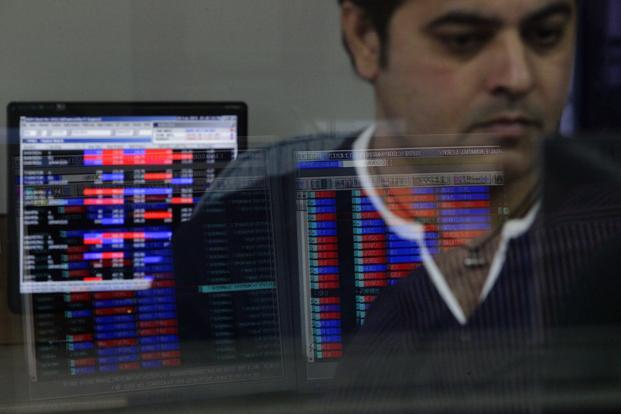
Key Takeaways
- A death cross is a technical indicator that occurs when the short-term moving average of a security such as a stock falls below its long-term moving average.
- The onset on a death cross can signal a bear market is on the horizon.
- Investors can utilise death crosses to help identify low-price entry points into the market.
Continue Reading →
Seek, and ye shall find your queries on a year-end list.
Such is the case for Asia’s Googlers, whose most popular financial searches of 2016 have been compiled and released by the company. The data is evidence of the roller coaster year it’s been for some of the world’s biggest economies, where local political scandals roiled the markets at the same time that curveballs from outside the region heightened volatility and triggered capital outflows.
After watching $5 trillion evaporate from China’s stock market last year, investors may have thought they deserved a calmer 2016. Yet, the flurry of bad news, from South Korea’s trio of political, economic and corporate scandals to India’s shock decision to junk 86 percent of its currency bills, ensured the year has been anything but. Add to that the U.K.’s June vote to leave the European Union and Donald Trump’s shock election in the U.S., and you start to understand why China’s dwindling foreign-currency reserves lay behind the country’s most popular financial search term.
Using Google’s data, here are four charts that gauge the pulse of Asian economies in 2016.
Continue Reading →

The benchmark indices on Friday settled higher thanks to early rollovers to January series and bargain hunting at lower levels after market witnessed seven straight sessions of losses. The S&P BSE Sensex finished at 26,040, up 61 points, while the broader Nifty50 closed at 7,985, up 6 points. The market breadth, indicating the overall health of the market, remained negative. On the BSE, 1,309 shares fell and 1,249 shares rose. A total of 174 shares were unchanged.
BSE Capital Goods and BSE Consumer durables were the top sectoral gainers and added nearly 1%.
Cipla was the top Sensex gainer and surged 4%, bouncing back 6.5% from intra-day low, after the pharmaceutical company said its flagship product Sereflo received final approval from UK health regulator.
September 2, 2016
Beware of boredom.

Last month was dull in the financial markets, even by the normally sleepy standards of August. The S&P 500 stock index didn’t move up or down by more than 1% in a single day all month, according to Howard Silverblatt, a senior analyst at S&P Dow Jones Indices.
Continue Reading →

Since 2008, the global asset management industry has been reeling under a relentless tsunami. While the assets under management (AUM) of actively managed mutual funds (MFs) have increased from $9.0 trillion to $13.4 trillion, passively managed index funds have surged from $0.6 trillion to $2.2 trillion. These now account for 12% of the total MF industry. Vanguard, the international company most identified with passive investing, had less than $25 billion in AUM for over two decades since its inception in 1975. It crossed the $100-billion mark in 1995. The march of exchange-traded funds (ETFs) has been equally impressive. By various accounts, the total AUM of ETFs has crossed the $2.1-trillion mark. ETFs have made significant inroads into the fixed income asset class, while index funds have been focused on equity.
Continue Reading →
The benchmark indices ended the Friday’s session lower as markets looked to settle down after the US Federal Reserve on Wednesday issued an outlook that was more hawkish than expected.
The S&P BSE Sensex ended at 26,489, down 30 points, while the broader Nifty50 closed at 8,139, down 14 points.
The market breadth, indicating the overall health of the market, remained negative. On the BSE, 1,486 shares declined and 1,122 shares rose. A total of 167 shares were unchanged.
Bharti Airtel was the top loser and lost 3% on the BSE. Other losers included ONGC, Adani Ports, ICICI Bank and ITC.
The Live Open Interest (OI) data being provided by exchanges is a matter of debate as the open interest streamed by the exchanges at 3.29 pm to the end of data released at 4.30 pm has a huge variance (sometimes over 40%). One wonders if it make sense to track the live OI and use it as part of the trading strategy.
Yes, the live open interest (OI) data streamed by exchanges is correct, but I don’t think it is a smart move to use the intraday OI data as part of the trading strategy. This is because of how institutional trades are settled.
Institutional clients use trading members to execute their orders and use the services of a clearing member (CM) to clear and settle the trades. So it means Broker executes the order and the Clearing member of the client has to confirm the order to take the order into their books. This confirmation is based on the instructions given by the client to the CM. If the CM rejects the order, the broker takes the responsibility to settle the trade. The time given for this confirmation process is till 1615 hrs post which the positions actually crystallize.
Assume I am a hedge fund X using Y for Clearing and broker Z for trading. All the hedge fund’s positions / funds are now managed by Y. Every morning Y sends Z a position and funds file for this hedge fund which is then updated on the trading platform. All trades that are executed intraday are held in the name of trading member Z and the Clearing Member Y accepts such trades. It’s an understanding b/w the client and the CM as when the positions / new trades should be accepted, either intra day or EOD.
Here is what can happen to the OI because of this. Assume X has 1000 lots of Nifty from the previous day. During the day it sold these 1000 lots using trading member Z. Assume that X has instructed CM to accept trades at end of the day. At this point, the hedge fund X has 1000 lots long with CM and 1000 lots short with the trading member when technically his open position should have been 0. After the market closing, the CM accepts the trade sent by trading member, and hence making the open position 0 for the hedge fund. But until the CM has accepted this trade, as you might have guessed, an inflated number for OI would be showing up. This is also the reason OI at 3.29 pm could hugely vary compared to the end of day OI on bhav copy given by the exchange.These can be accentuated during the expiry week when rolling over positions.
If you are using intraday OI data as part of your strategy, you should be cognizant of the fact that such institutional trades could change the OI number at the end of the day. So best to use only end of day OI data.
The original question was posted here.

For those of us who are stock market novices, the thought of playing the stock market is simultaneously electrifying and terrifying. The stock market seems to present an endless realm of financial possibilities, as long as you know what you are doing. However, for those of us who don’t know where our bulls start and our bears end, the stock market can seem like a dizzying, complex place.The stock market is also home to some truly unusual happenings.
Here are 7 crazy Stock Market facts:
Continue Reading →
Benchmark indices settled on a flat note tracking mixed cues from global peers after ECB unexpectedly reduced its monthly asset buys but pledged to keep its quantitative easing (QE) program beyond 2017, if needed. Nifty saw the biggest weekly gain since the first week of September and comfortably maintained its crucial 8250 levels in today’s session.
S&P BSE Sensex settled the day 53 points higher at 26,747 while Nifty50 gained 15 points to end at 8,262. In broader markets, BSE Midcap gained 0.21% while BSE small cap was up 0.52%.
Banking sector gained after RBI reversed its order forcing lenders to surrender all their extra cash and place it under the cash reserve ratio.
Continue Reading →










